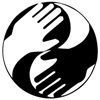Deep Tissue Massage
Questions:
- Are you experiencing constant, severe pain in a part of your body like the neck or shoulders?
- Are you an athlete or a physical laborer who puts a lot of pressure on your muscles regularly?
- Have you experienced a physical injury of some kind?
If the answer to any (or all) of these questions is yes, then deep tissue may be the right choice for you.
The purpose of a Deep Tissue Massage is to release tightness and tension in the muscles as well as in the connective tissue known as the fascia.
As the name suggests, this style of massage presses beneath the surface of the skin and deep into the muscles and tissues beneath it.
The purpose is to realign these deeper layers of connective tissue as well as muscles beneath the surface layer. By realigning the muscles and tissues, pain is relieved and the body is able to relax.
Sign up for your Massage Session TODAY!
How Does a Deep Tissue Massage Work?
Chronic pain such as neck or lower back tightness is often caused by adhesions – bands of muscle, ligament and tendon tissue that are tight and rigid.
These adhesions not only hurt, they can also inhibit circulation, cause inflammation, and limit your range of movement.
During a deep tissue massage treatment, these tight, rigid areas are gradually broken down.
The massage therapist applies different kinds of pressure – often slower, firmer, more concentrated versions of the strokes used in Swedish massage – to get the tight tissues and muscles to "release".
The therapist works across the grain of the muscles to achieve this affect.
Like any massage, this type of massage should not hurt, as pain is never the goal of a massage treatment.
However, some discomfort during the procedure is normal, as the muscles that are being worked on are often stressed and sore to begin with.
Schedule a massage appointment TODAY!
The History of Deep Tissue Massage
Like many offshoots of classic, or Swedish, massage, deep tissue massage doesn't have an obvious "birthday". It evolved along with many forms of western massage over the course of the 19th century.
In the late 1800s, a technique known as Canadian Deep Muscle massage, targeting specific muscles and muscle groups, gained some press coverage in New York City.
Practitioners of this type of massage were specifically trained to work on certain muscle groups and parts of the body and apply "cross fiber" pressure to relieve stress and pain.
The technique has grown in popularity in recent years as more attention has been paid to "sports medicine" and the type of injuries most frequently sustained by athletes.
Additionally, deep tissue massage has emerged as a viable alternative to drugs and other more extreme forms of dealing with pain from an injury or strain.
What to Expect from Your Deep Tissue Massage
Before your massage begins, you should discuss with your therapist exactly what your problem areas are, where you are feeling pain and what sort of pain you are experiencing.
You will be taken to a private room, where you will change out of your clothing and lie on a comfortable massage table.
You will be covered by a sheet, and the room will be warm so you are not chilled. Your head will be placed on a special pillow – soft music may be playing, and aromatherapy oils may scent the air.
Everything will be designed to insure your complete relaxation.
When the therapist reenters the room, he or she will warm some oil in his or her hands, and begin with some gentle touching.
Deep tissue massage uses many of the same movements and techniques as Swedish massage – stroking, kneading, rubbing and tapping.
But in deep tissue massage, these movements will me more focused and intense, concentrating your therapist’s energy on the parts of your body that need it the most.
As we mentioned before, you may experience some discomfort during a deep tissue massage. Be sure to tell your therapist if the pressure is too hard of if anything is painful.
Together, you should be able to achieve the optimum level of pressure to ease your muscles and tissues into a state of relaxation.
When your session is over, you should feel significant relief from stress and tension in the affected areas. You may be a little tender in some areas, but this should subside in a day or two.
Schedule a massage appointment TODAY!
What Others are Saying about Deep Tissue Massage
"Soft-tissue massage improved range of motion, reduced pain and improved function in people with shoulder pain."
Auburn Hospital and Concord Repatriation General Hospital in Sydney, Australia. Authors: Paul A. van den Dolder and David L. Roberts. Originally published in the Australian Journal of Physiotherapy 2003, Vol. 49, pp. 183-188.
"As a massage therapist who specializes in (deep tissue) massage, I see the benefits of it with my clients on a daily basis. For my own problem areas, I've found that therapists who use deeper techniques have been best in providing the long-lasting results for me that I also expect my clients to enjoy."
Howard Northrup, Massage Therapist, Satellite Beach, Florida
Schedule a massage appointment TODAY!

Open Monday through Friday 8 am - 6 pm.
Saturday by appointment.
Power Therapeutic Massage
Suite B
Effingham, IL 62401
Get Directions
Advanced reservations are appreciated, but last-minute bookings may be available. Please call for availability. In case of cancellation please give 6 hours notice.
Most Popular Massages

